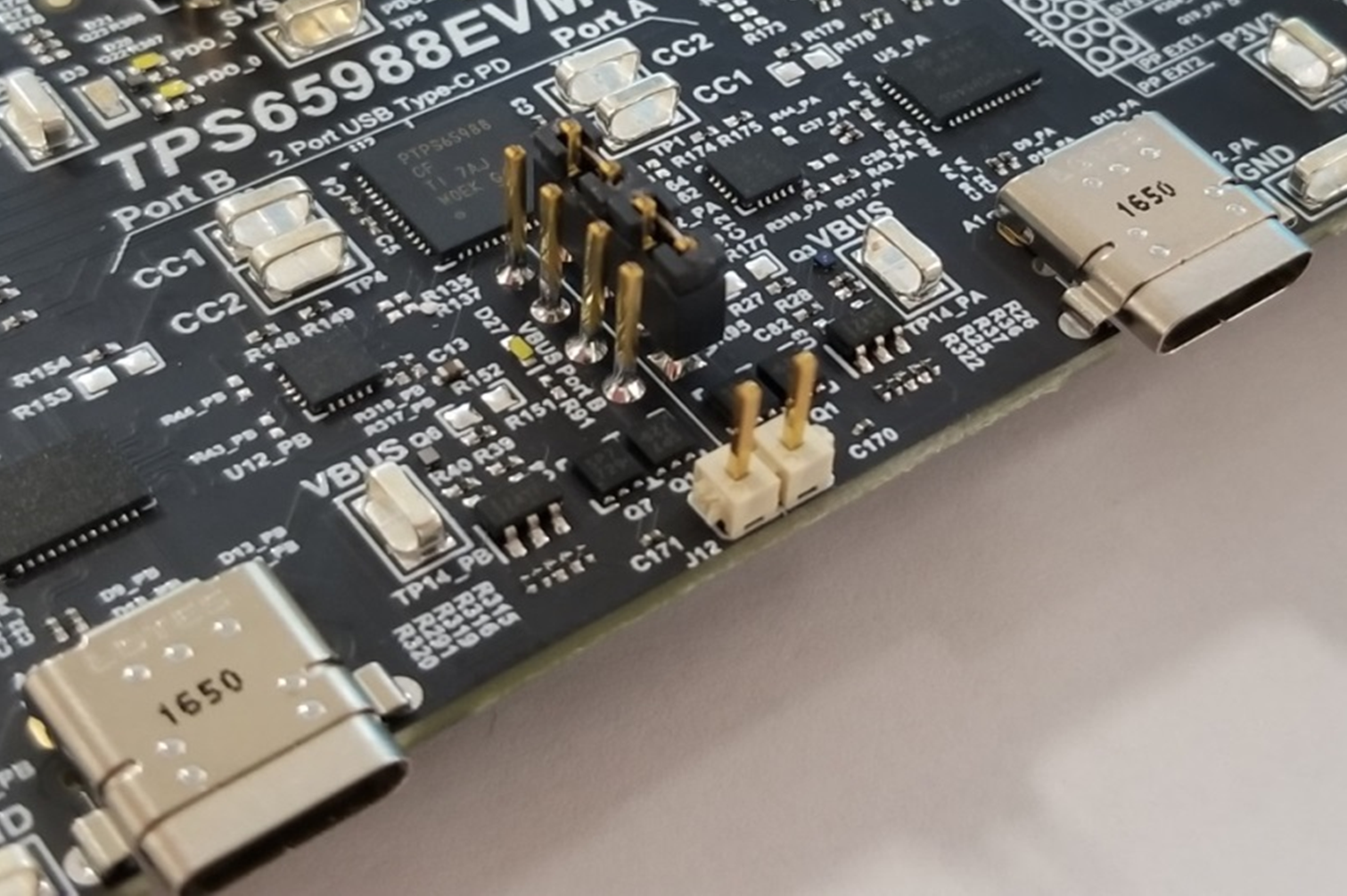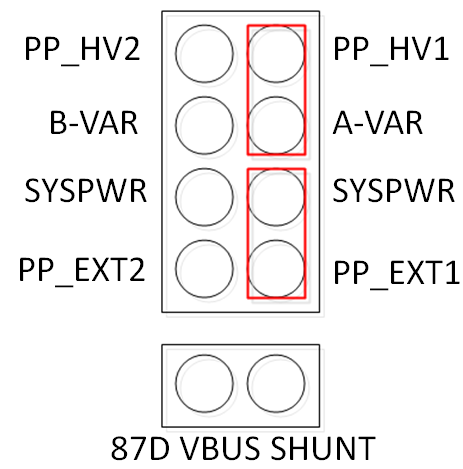SLVUB62B June 2017 – November 2020
- Trademarks
- 1 About this Manual
- 2 Information About Cautions and Warnings
- 3 Items Required for Operation
- 4 Introduction
-
5 Setup
- 5.1
Switch, Push Button, Connector, and Test Point Descriptions
- 5.1.1 Power Path Jumper Configuration
- 5.1.2 DP Source Receptacle
- 5.1.3 S1 HRESET Push-Button
- 5.1.4 S6 SPI MISO Pull Down Button
- 5.1.5 S3: FTDI Enable and Disable
- 5.1.6 S2: SPI , I2C, and BusPowerZ Configurations
- 5.1.7 J1: Barrel Jack Power Connector
- 5.1.8 Barrel Jack Detect
- 5.1.9 USB Type B Connector (J11)
- 5.1.10 USB Type-CConnector (J2)
- 5.1.11 USB Micro B Connector (J9)
- 5.1.12 TP13 (5 V), TP8 (3.3 V), and TP12 (1.2 V)
- 5.1.13 Aardvark Connector (J10)
- 5.1.14 TP10, TP11, TP15, TP16, TP17, TP18, TP9: GND Test Points
- 5.1.15 TP1, TP2, TP3 and TP4 – CC1 and CC2 Test Points
- 5.1.16 TP14 (PA and PB): VBUS Test Point
- 5.1.17 TP7, TP6, and TP5: A-VAR, B-VAR, and System Power Test Points Respectively
- 5.1.18 J3 and J4 (Bottom of EVM): Signal Headers
- 5.2 LED Indicators Description
- 5.1
Switch, Push Button, Connector, and Test Point Descriptions
- 6 Using the TPS65988EVM
- 7 Connecting the EVM
- 8 REACH Compliance
- 9 TPS65988EVM Schematic
- 10TPS65988EVM Board Layout
- 11TPS65988EVM Bill of Materials
- 12Revision History
5.1.1.3 TPS65987S Jumper Configuration
To emulate a TPS65987S with the TPS65988EVM, the jumpers on J11 need to be adjusted. The TPS65987S supports one Type-C port and contains one internal power path. When using the TPS65988EVM to emulate a TPS65987S, the internal power path (PPHV1) is used as the Source Path and one of the external power paths is used as the sink path. The TPS65988 can be configured to act as a TPS65987S through the use of a TPS65987S Configuration Template in the TPS6598x Application Customization Tool. Refer to Figure 5-5 and Figure 5-6 for the TPS65987D Jumper Configuration. When the TPS65988EVM is configured as a TPS65987S, only Port A is functional.
 Figure 5-5 TPS65987S Jumper Configuration
Figure 5-5 TPS65987S Jumper Configuration Figure 5-6 TPS65987S Jumper Configuration Net Names
Figure 5-6 TPS65987S Jumper Configuration Net Names